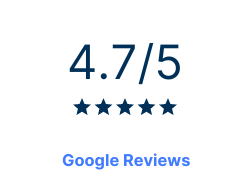
Looking to get started with Adobe Acrobat but don’t know where to begin? Welcome to ‘Acrobat Essentials a Beginner’s Guide,’ the straightforward resource designed to help you navigate the basics of this powerful PDF tool. From opening and customising your first document to creating and editing PDF files with confidence, this guide is your companion on the journey to PDF mastery.
Follow along as we break down the essentials into manageable steps, ensuring you not only understand the features but also know how to efficiently apply them to your digital documents.
Navigating the Acrobat Interface
Stepping into Adobe Acrobat, the interface presents three main areas:
-
Home: acts as a central landing page where users can quickly access recent files, shared files, tools, and connected storage accounts.
-
Tools: allows users to work with PDFs and provides a wide range of editing and annotation tools.
-
Document: provides a workspace for working with PDFs and customising the viewing experience.
Customisation of the workspace enhances efficiency across different devices and locations, placing frequently used tools at your fingertips while adhering to industry standard practices.
Next, we’ll examine the initial phase of utilising Acrobat - opening and viewing PDFs.
Opening and Viewing PDFs
Opening PDF documents in Adobe Acrobat is as simple as double-clicking the file in your directory. The Document view displays your PDF, offering a comprehensive view of the document’s content through the:
-
Menu bar
-
Toolbar
-
Document pane
-
Navigation pane
-
Tools or tasks pane.
With Adobe Acrobat, you have the power to customise your reading experience with various viewing options within the Document view.
Customising the Toolbar
To enhance your Adobe Acrobat usage, customising the toolbar for quick access to frequently used tools is a game-changer. By right-clicking an empty space on the Quick Tools toolbar, you can add or remove tools and even reorder them according to your preference. This way, you create a personalised workspace, tailored to your needs.
Using Bookmarks and Comments
Bookmarks in Adobe Acrobat function like links to specific sections within a PDF, enabling quick navigation without scrolling through pages. Furthermore, Acrobat users can add comments to PDFs for review and annotation purposes, serving as an essential tool for document collaboration.
With annotation and markup tools, everything from feedback to collaborative discussions can take place within your PDF documents.
Creating and Converting Documents

Beyond viewing and navigation, Adobe Acrobat proves its versatility by offering the ability to:
-
Create and convert documents into PDFs
-
Transform scanned documents or clipboard content into PDFs
-
Convert Microsoft Office documents into PDFs, while retaining font attributes, formatting, and layout to ensure consistency with the original document.
We’ll now examine the diverse ways of generating PDFs.
Create PDFs from Various Methods
Creating PDFs can be as simple as using the ‘Save As’ feature in Microsoft Word or Excel and selecting PDF as the file type. For Mac and iOS users, ‘Save As’ and ‘Export’ features within the Office app respectively, allow the generation of PDFs. Such versatility ensures that no matter what device you’re using, creating a PDF is a straightforward process.
Convert Files to PDF
Converting files to PDF format in Adobe Acrobat is a breeze. Whether you’re converting a Word document, an image file, or even a webpage, Acrobat ensures that the layout and formatting remain consistent. Moreover, when converting from Microsoft Office, advanced PDF creation options are available, such as setting page ranges, including document properties, and tagging the structure for accessibility.
Combining Multiple Files
Adobe Acrobat takes document organisation to another level by allowing users to combine multiple files into a single PDF document. This feature is particularly useful when you have numerous JPG files that you want to consolidate for easier sharing and printing. Once the documents are merged, Acrobat provides options to organise the pages through:
-
Rotating
-
Moving
-
Deleting
-
Extracting
-
Renumbering
Editing PDF Files

Editing PDF files is no longer a complex process, thanks to Adobe Acrobat. Whether you want to replace, edit, or add text, Acrobat has got you covered. The Edit panel in Acrobat’s edit mode makes text modifications a breeze. Once you’ve made your edits, simply save the PDF document to ensure that all changes are preserved.
Next, we’ll demystify the procedure of text editing in PDFs.
Text Editing in PDFs
From correcting typos to adding superscripts or subscripts, Adobe Acrobat’s text editing capabilities are robust. However, it’s important to note that if the original font is not present on your system, Acrobat substitutes it with a similar one, which can slightly alter the look of the text. Therefore, to maintain consistency, it’s advised to use available fonts or embed the desired fonts into the PDF.
Managing Images in PDFs
Adobe Acrobat doesn’t just handle text; managing images in PDFs is another one of its strengths. Whether you need to move, rotate, or resize an image, Acrobat makes it possible. However, for advanced image refinements, external image manipulation software like Photoshop or Illustrator may be needed. After making changes in these applications, the updates are applied to the PDF upon saving.
Saving and Exporting Your Edits
After making your edits, remember to save the PDF document to keep all changes intact. Additionally, Adobe Acrobat allows users to export edited PDF files back into Microsoft Word format, enabling further modifications in the original document layout before re-exporting to PDF.
Enhancing PDF Accessibility

PDFs can be inaccessible to users with disabilities due to fixed layouts, lack of structure that can be recognised by screen readers, and complex designs that are not compatible with assistive technologies. However, Adobe Acrobat offers several features to enhance PDF accessibility, making it user-friendly for everyone.
Adding Alt Text to Images
Alternative descriptions for images in PDF documents, also known as alt text, are crucial for making content accessible to users with disabilities. The alt text should include any important text within the image to ensure the image's meaning is effectively communicated.
Creating Fillable Forms
Adobe Acrobat can transform old forms and paper documents into fillable PDFs, allowing users to enter data directly into the form. These fillable PDFs can be enhanced with JavaScript for additional functionality such as form calculations, validations, and assigned action buttons.
Ensuring Document Accessibility
Acrobat Pro DC features an integrated accessibility checker that assesses PDF documents for compliance with accessibility standards. This tool, part of the Acrobat DC family, is designed to help users identify and resolve issues within PDF documents, ensuring they are accessible to everyone.
Collaborating and Sharing PDFs

Sharing and collaboration are essential in today’s digital age. Adobe Acrobat makes collaborating and sharing PDFs easier than ever. Whether you want to share documents directly or use a link, Acrobat has got you covered. Plus, shared PDFs can be accessed on different devices, ensuring flexibility and convenience for collaborators.
Next, we’ll dive into the different ways of sharing PDF documents.
Sharing PDF Documents
Adobe Acrobat provides several methods for sharing PDFs, from sending via link, email attachments, or inviting others for collaborative commenting and activity tracking. The collaboration features extend to sharing fillable PDF forms via email with a link, allowing users to track the status of responses.
With Acrobat, you can combine PDFs by merging multiple image files into a single PDF document, making sharing easier and more organised.
Reviewing and Commenting
Reviewing and commenting on PDFs in Adobe Acrobat is an efficient way to provide feedback. Acrobat provides quick actions in a floating toolbar for commenting while viewing a PDF, enabling users to highlight text, add sticky notes, and use drawing tools. Users can also modify the appearance of comments and lock them to prevent any further editing or deletion.
Using Digital Signatures
Digital signatures in Adobe Acrobat establish the authenticity and integrity of signed documents, ensuring they have not been tampered with post-signing. To acquire a compliant digital ID for digital signatures, individuals must prove their identity through certified providers.
Each digital signature is unique and verified using a digital certificate and a personal identification number (PIN), enhancing the security of the signed PDF.
Securing Your PDF Documents
Security is a top priority in Adobe Acrobat. The application provides features like:
-
Password protection
-
Redaction
-
Setting permissions
-
Encrypting PDF documents
These features restrict unauthorised access and ensure that only those with the correct password can access or use the document as intended.
We’ll now discuss the process of securing PDFs with passwords and redacting sensitive details.
Protecting PDFs with Passwords
Adobe Acrobat provides a feature to encrypt PDF documents with a password, ensuring that only users with the correct password can open and view the document’s contents. The document owner can restrict users from printing, editing, or copying content within the PDF without the right password. However, it’s important to remember that if the Acrobat PDF password is forgotten, recovery is not possible.
Redacting Sensitive Information
Adobe Acrobat’s redaction tool allows users to permanently black out sensitive information in a PDF before sharing. With the Redact tool’s search functionality, you can redact multiple instances of specific words, phrases, numbers, or patterns like phone and Social Security numbers. Once a PDF is saved with redaction adjustments, the redacted information cannot be recovered by the recipient.
Validating Digital Signatures
To confirm the signer’s identity and that the document has not been altered after being signed, digital signatures in PDFs can be validated using Adobe Acrobat. This process checks the revocation status of certificates and relies on timestamps to evaluate the validity of a signature at the time it was made.
Adobe Acrobat’s signature verification preferences can be configured to automatically validate digital signatures upon opening a document.
Integrating with Adobe Creative Cloud
Adobe Acrobat integrates seamlessly with Adobe Creative Cloud, offering users a holistic document management solution. Whether you’re syncing PDFs across different devices or using other Adobe applications for advanced graphic editing, Adobe Creative Cloud has got you covered.
We’ll uncover the advantages of integrating Acrobat with Creative Cloud, modifying PDFs with other Adobe applications, and accessing resources and support.
Linking with Creative Cloud
Adobe Creative Cloud allows users to synchronise PDFs across different devices, ensuring that the latest version of a document is accessible from anywhere. Adobe Acrobat allows PDFs to be stored and synced across devices using Adobe Document Cloud.
To install Creative Cloud apps, including Acrobat, users must sign in at the Creative Cloud website and select either Download or Install for the desired app.
Editing PDFs with Other Adobe Apps
Adobe Acrobat integrates with other Adobe applications like Photoshop and Illustrator for advanced graphic editing capabilities. These applications offer extensive image manipulation and vector graphic adjustments, enhancing the overall PDF management process.
After making changes in these applications, the updates are applied to the PDF upon saving.
Accessing Resources and Support
Adobe offers a wealth of resources and support for Adobe Acrobat users. Adobe Reader Forums are available for users to search for solutions to common issues or post their questions for assistance from the community. Users can also purchase individual support tickets for personalised help from an Adobe expert.
Additionally, Adobe offers tutorials, livestreams, and a beginner’s guide to help users get started and understand the functions and features of Adobe Acrobat Pro.
Unlock the Full Potential of Adobe Acrobat
Embark on a journey of discovery and mastery with Adobe Acrobat, guided by Nexacu's expert-led courses. As we've explored the dynamic features of Adobe Acrobat, from creating and converting documents to enhancing PDF accessibility, collaborating, and securing PDFs, it's clear that Acrobat is not just a PDF viewer—it's an essential tool for efficient document management in the digital world.
Nexacu, a leader in professional training, offers tailored courses that can help you unlock the full potential of Adobe Acrobat. Their training sessions are designed to elevate your skills, ensuring you can navigate and utilise Acrobat's features to their fullest. Whether you're a beginner or looking to refine your expertise, Nexacu's courses are the perfect complement to this indispensable software in today's digital age.
Frequently Asked Questions
How can I customise my Adobe Acrobat workspace?
To customise your Adobe Acrobat workspace, right-click an empty space on the Quick Tools toolbar and add or remove tools according to your preference. This will allow you to tailor the workspace to your specific needs.
How can I make my PDFs accessible?
To make your PDFs accessible, use Adobe Acrobat's features like adding alt text to images and creating fillable forms. This can greatly enhance the accessibility of your PDFs.
How can I secure my PDF documents?
You can secure your PDF documents by using Adobe Acrobat features such as password protection, redaction, and encryption to prevent unauthorised access and set permissions.
Can I edit my PDFs using other Adobe applications?
Yes, you can edit your PDFs using other Adobe applications such as Photoshop and Illustrator for advanced graphic editing capabilities.
How can I get help if I encounter issues with Adobe Acrobat?
If you encounter issues with Adobe Acrobat, you can get help by accessing Adobe's resources and support, such as the Adobe Reader Forums and individual support tickets for personalised assistance from an Adobe expert.
 phone
phone
 email
email
 enquiry
enquiry
























